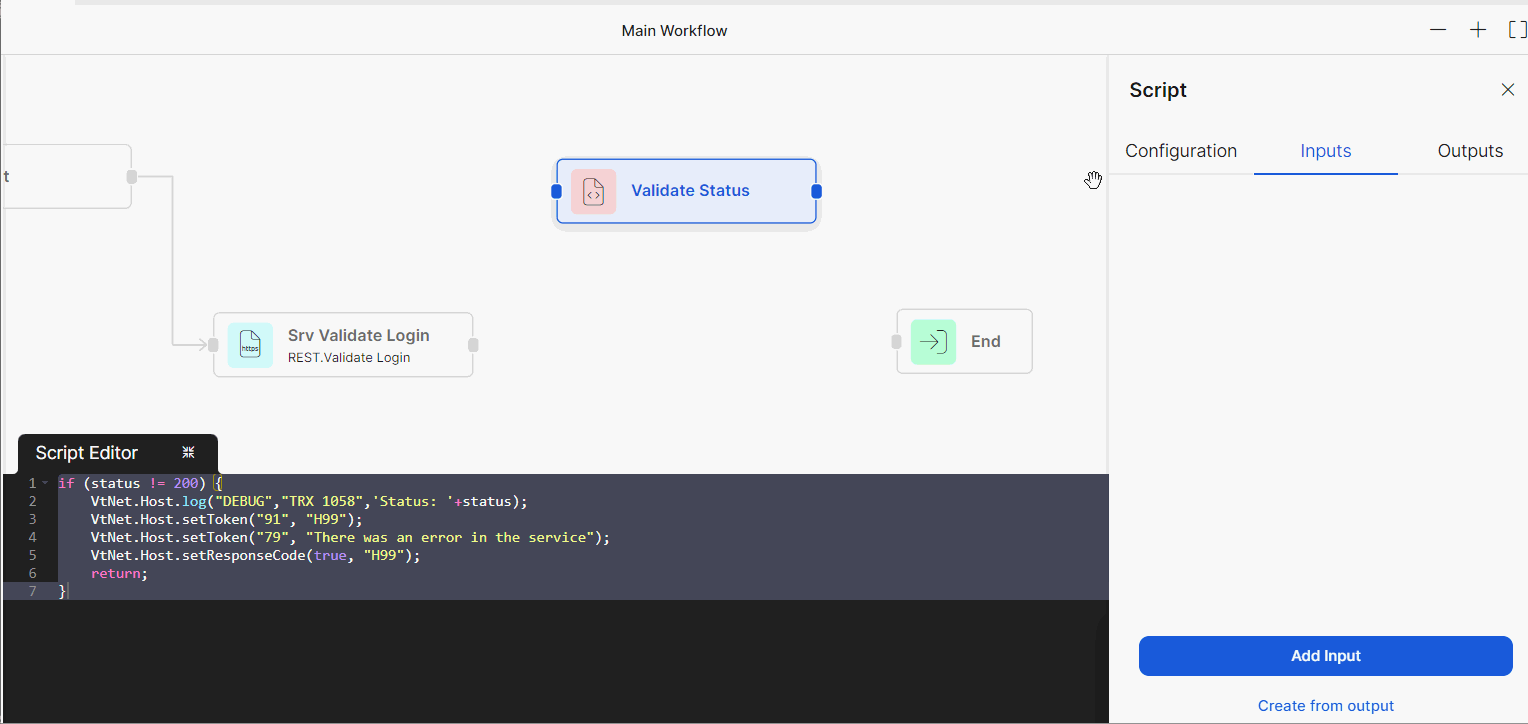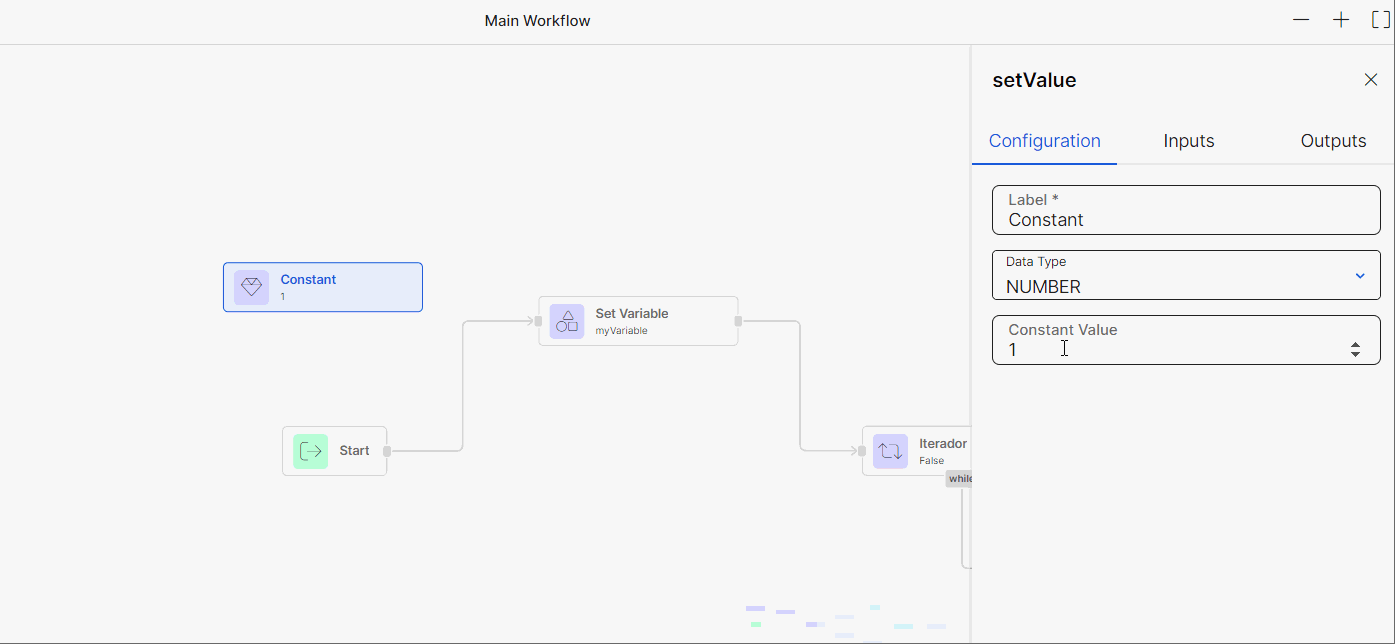Input and Output Parameters
In a transaction, an input parameter receives information, whereas an output parameter transfers information to the following node in the transaction. You must configure input and output parameters in every transaction to transfer data between nodes in the flow.
To do this, click a node in the canvas, such as an action, a library, a procedure, or a service. A right panel opens, divided into three tabs: Configuration, Inputs and Outputs.
In the Configuration tab, set a name for the node in the Label field. The name must describe the node's functionality within the transaction. You can also configure additional information that varies depending on the type of element selected. For example, on a Branch action, you can configure the data type and the condition.
From the Inputs tab, you configure the information that the selected node is receiving from the preceding node in the flow. Inputs vary depending on the node selected and the flow you are building. This tab is available for the Start and End nodes, and for every action, except for the Constant.
From the Outputs tab, you configure the information that is traveling from this node to another one in the flow. Outputs vary depending on the node selected. This tab is available for the Start node and for every action.
Add Inputs
To add an input to a node, select the node and, in the right panel that opens, click the Inputs tab. You will see one or more parameters ready to be configured, depending on the node selected. In the example below, the Branch action displays the a and b parameters already available to be configured.

Click the drop-down lists to see the available input parameters with their name and, between brackets, the name of the node they are coming from.

In some actions, such as Script, click the Add Input button, and complete the following information:
Name | Enter a name for the parameter. It cannot contain spaces or special characters. |
Type | Use the drop-down menu to select the type of data of the parameter's value. The options are binary, boolean, date, list, number, object, row, string, and table. |
External variable | In this field, set the register or global variable that stores or retrieves data. |
Default value | Set a default value for your parameter. It overrides the register value received through the External Variable. |
You can also create an input from another node's output. This means that you can receive data from another node's output parameter.
Select the node and, if available, click Create from output.
The Create connection from modal window opens. Click the Select an item drop-down list to display all the available output parameters set on the nodes on the canvas and select the desired input.
On the modal window that opens, confirm the data and click Add to finish the process.

Add Outputs
To add an output, select the node and, in the right panel that opens, click the Outputs tab. Click the Add Output button and complete the name of the output. In the Type field, select the type of information the node is receiving. The options are binary, boolean, date, list, number, object, row, string, and table.
You can also create an output from another node's input. This means that you can create an output parameter by connecting the selected node to another node's input parameter.
Select the node and, if available, click Create from input.
The Create connection from modal window opens. Click the Select an item drop-down list to display all the available input parameters set on the nodes on the canvas and select the desired input.
On the modal window that opens, confirm the data and click Add to finish the process.

Data Transformation
When configuring inputs and outputs, the type of data might differ between actions. For example, if you set a numeric output as a string input, the Connection Properties option appears. This option allows you to transform the data.
In the example below, a constant numeric value is set as a string type input on a Set Variable action. The Connection Properties option appears on the Inputs tab that allows you to modify the decimal and thousands separators.
